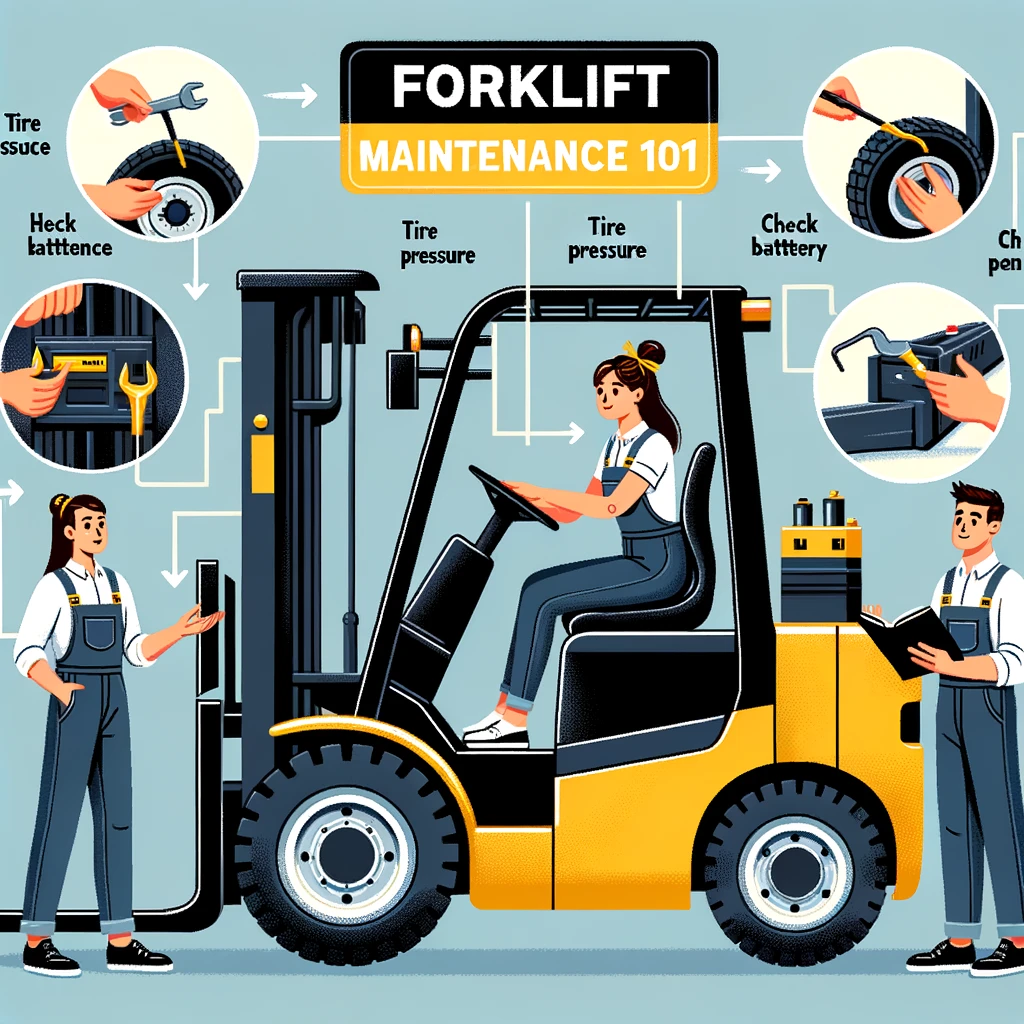Forklifts, often referred to as the workhorses of the warehouse, play a pivotal role in ensuring smooth operations in various industries. Just like any other machinery, forklifts require regular maintenance to ensure they function optimally and have a prolonged service life. In this article, we’ll delve into the basics of forklift maintenance, highlighting key practices that can keep your equipment in top-notch condition.
1. Daily Inspection Routine
Before starting your forklift for a day’s work, it’s essential to conduct a thorough inspection. Here are some areas to focus on:
- Tires: Check for wear and tear, proper inflation, and any visible damage.
- Fluid Levels: Ensure that the oil, coolant, brake fluid, and hydraulic fluid are at the recommended levels.
- Forks: Examine for any signs of cracks, distortions, or wear.
- Brakes: Test the brakes to ensure they’re responsive and not making any unusual noises.
- Lights and Indicators: Make sure all lights, including warning lights, are functioning correctly.
2. Regular Cleaning
Dirt, dust, and debris can lead to decreased performance and even damage. Regularly cleaning your forklift, especially the engine compartment, can prevent overheating and maintain optimal airflow.
3. Lubrication
Frequent lubrication of all moving parts, including chains and mast components, ensures smooth operation and reduces wear and tear. Use the recommended grade of lubricants and follow the manufacturer’s guidelines.
4. Battery Maintenance
If your forklift operates on a battery, it’s crucial to:
- Check the water levels regularly.
- Ensure the battery terminals are clean and free from corrosion.
- Charge the battery following the manufacturer’s guidelines. Avoid overcharging or undercharging.
5. Scheduled Servicing
Apart from daily checks, forklifts require periodic in-depth servicing. This includes:
- Changing the oil and filters.
- Inspecting the transmission.
- Checking the integrity of belts and hoses.
- Evaluating the lift and tilt cylinders for any leaks or damages.
6. Maintain a Logbook
Documenting each maintenance activity can be invaluable. A logbook helps track when the next service is due, records any issues or repairs, and can be a handy tool during resale to demonstrate the forklift’s maintenance history.
7. Address Issues Promptly
Never ignore minor issues. Small problems, if overlooked, can escalate into significant, costly repairs. If a forklift shows signs of decreased performance, unusual noises, or any other anomalies, it’s crucial to address them immediately.
8. Training and Certification
Ensure that only trained and certified operators handle your forklifts. An operator familiar with the equipment will not only operate it safely but will also be more likely to notice and report any irregularities.
Conclusion
Regular maintenance of your forklift is not just about prolonging its life but also about ensuring the safety of the operators and the overall efficiency of your operations. By integrating these practices into your routine, you can ensure that your forklift remains a reliable asset for years to come.




